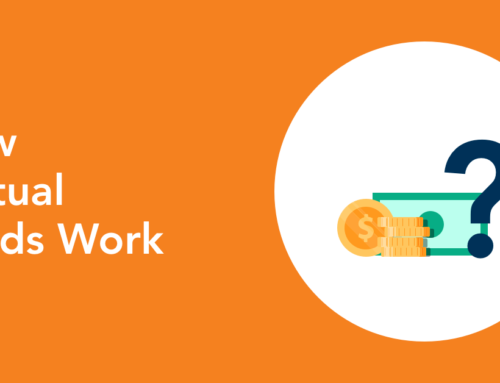Stocks rarely perform in the time frames we predict, and it’s why the market only works for investors that have a long-term portfolio focus.
— Ian Cassel (@iancassel) June 16, 2017
Whenever I listen to or read about investing, I only listen to one thing. INVEST FOR THE LONG TERM.
I will not waste time on the introduction as this subject is an ancient fight among investors. You will come to know so many views. I am trying to use facts and historical proof.
So, let us start.
What are the recipe and ingredients for one successful portfolio? What is a portfolio?
The portfolio is an asset of an investment of stocks or photos if you are a professional model. by definition, it’s a collection of assets.
What is vital for making a Portfolio? Objective, time frame, asset allocation, and risk appetite with the person who knows about it.
The first step was making an Investment Policy Statement IPS. In India, I believe not many people are aware of it. But it is better to make it. It acts as a guidebook or map when confused. What is supposed to mention in it? So many things. Like How much loss your client can handle. As risk appetite is not the same for all, some don’t care even 40%, some may be got a heart attack on 20% down and will be advised to book profit on 25% up. There are some extensive NO-NO stocks for some people like for me, YES BANK. one more is ITC. Though I know how great business it is, the fact that 60% of the revenue of ITC is from Tobacco, I wouldn’t say I like it. But I have no issue watching Bharat Electronic Limited, Maker of War Machine, and some Radar in my portfolio. An investor working in the church will never accept his money invested in stock of contraceptive manufacture.
Determining asset allocation is an essential step for a portfolio. But the question is for whom you are doing it. The fact is age is a critical factor in determining asset allocation. Though I don’t believe the formula (100 – age) = equity allocation, I think the lower the age, the higher the share towards equity. Say you are 25 Years old, college-going, and have low liabilities. You can afford a large allocation, even 100%. Whereas if you are in your 30s, your liabilities are different. If you don’t know about it, there are other ways to invest in equity-like ETFs, Mutual Funds. Some may say that Global equity’s Risk return profile is different. My answer is No. EQUITY IS EQUITY. The difference is only in demography, different continents, different sectors, and different prospects. But still, equity is not equal to debt or some REIT, Infrastructure Investment Trust, or Private Equity. Private equity is different Because it is not a classical investment. Its alternative investment, Like a combination of Leverage, High growth potential, Quality assets, etc.
How many risks CAN YOU TOLERATE? It depends on many cases. For example, say You are F1 Driver or an entrepreneur. You love to take risks. But if you are not making money to cover your expenses. Willingness and capacity are two different things, and you should take whichever is lower.
Another factor is your knowledge of the asset class, risk, and return. Here I believe in the Modern Portfolio theory even though there are some flaws in it. For example, it says that a combination of two risky assets may or may not be as dangerous in the portfolio. There is some jargon to explain it, but I don’t want to go into deep.
The next thing I believe is essential in deciding on investment is conservative or aggressive. What is the right asset mix as per Risk appetite? Generally, a lower risk appetite lowers the allocation to equity. Some investors like to invest whole capital, whereas some want to keep cash in hand. If your target is under two years, make a significant allocation in Fixed Income. If you think you have sufficient considerable wealth, keep risk low.
After this all, one more thing is essential in making your LONG TERM PORTFOLIO that is strategy. How to make the right mix?
- BUY AND HOLD: Buying companies with good fundamentals and holding them for the long term. One example of such is Philip Fisher. He was invested in Motorola from when Motorola was manufacturing Radio for Fisherman to keep them informed about any cyclone. Coffee can portfolio is a way to utilize it.
- Market timing: Though I am not a supporter of market timing, there are some followers of this technique. I am not sure whether the technical analysis is helpful, but it is one where the investor is timing the market. Another way to time market is Magic Formula investing. When investors select companies having good fundamentals and available at discounts, though it is helpful in the short term, if replicated more often, it may prove long-term.
- Diversification: Holding 2 or more risky assets in the same portfolio may reduce risk and help to make more return on lower risk, known as the Sharpe ratio. Though some may say it is not helpful as it can’t cover your portfolio on 10 or 20% down days, how many times can you see such a big crash? Anyway, this is one way to make your portfolio that is helpful in the long term.
- Dollar-Cost Averaging AKA Systematic Investment Plan: You may be aware of this strategy as it is widely used. Recently I saw one extensive calculation proving that when you use it as a strategy, you outperform the benchmark. The reason for such outperformance is you are using volatility for your benefit.
- Dogs of Dow: Though there is Dow in the name and this way of investing use dividend yield for searching stocks with good return plus some amount of dividend. It’s straightforward to use. First, search for the companies having the lowest dividend yield. Then, invest one year in that company and change the allocation after one year.
There are many more techniques and strategies. But this is an important one.
After searching and studying them, I can tell you that it’s better to choose the right stocks and then invest in them for some time and sell them.
This #InternationalYogaDay use SIP to bring Yoga like balance to your financial portfolio pic.twitter.com/iA2BUH4kkH
— HDFC Mutual Fund (@hdfcmf) June 21, 2017




